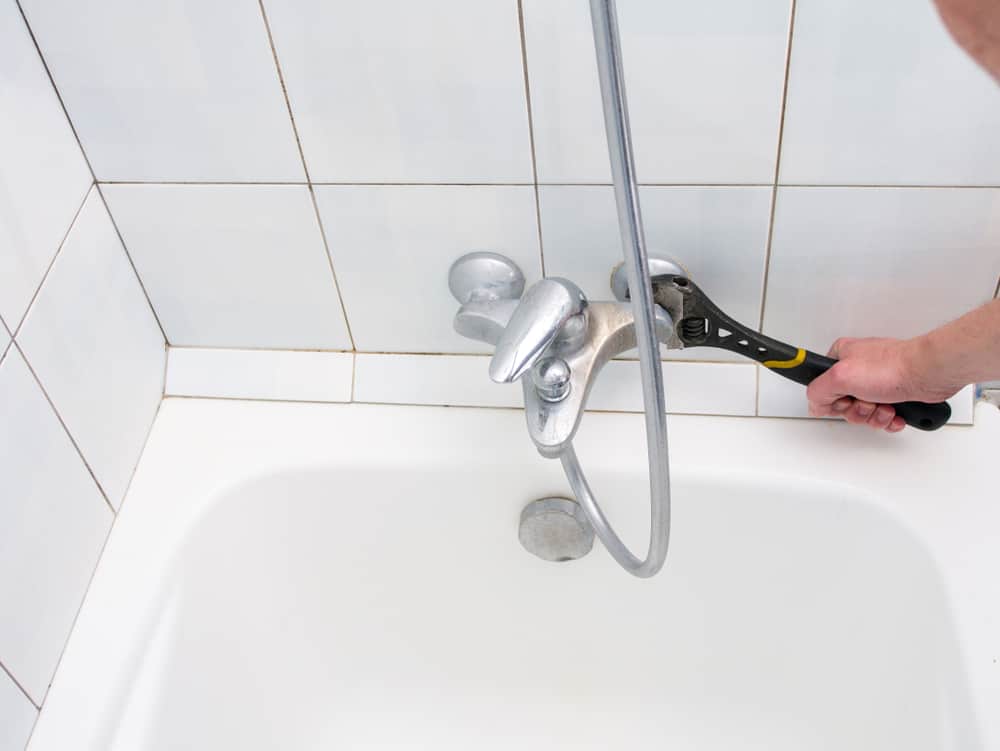5 Acrylic Washroom Problems and Solutions
5 Acrylic Washroom Problems and Solutions
Blog Article
{Visit Site Are you trying to locate related information around 6 Things to Know About When Hiring a Plumbing Services? We recommend that you clean your acrylic bathing product made of Delta ProCrylic or Acrylic with Innovex Technology with non-abrasive soaps and cleaners, such as: When it’s time to clean, always use a terry cloth towel, soft cloth or sponge to avoid scratching the acrylic surface. Don’t use abrasive scrubbing pads, steel wool or sponges, cause permanent damage to the acrylic material. If you use a drain cleaner or clog remover, be sure to rinse thoroughly with water so no product is left standing near the drain. Some chemicals and cleaners may deteriorate acrylic surfaces, causing cracks and, potentially, property damage. To avoid this, don’t use cleaning products that state on their label that they are not suitable for use on Acrylic, ABS, Polystyrene or Plastic. Be sure to check the label of any product before you apply it to the surface; it’s easier to avoid damage than to try to remedy it. Chemicals we do not recommend using to clean acrylic showers/tubs: When you’re ready to apply sealant, a little planning goes a long way. Pick up some painter’s tape and use it to mask off the seam to help make cleaning up easier. When you’re applying the bead, use a constant, steady speed to avoid an uneven finish. Use a caulk tool or a plastic spoon to work the sealant into the joint. Wetting the tool with denatured alcohol will help create a smooth finish. Follow the directions on the back of the tube for cure time. Certain chemicals and cleaners may deteriorate acrylic surfaces, causing cracks and, potentially, property damage. After you’re finished applying it, clean up the product surface and remove any excess sealant with denatured alcohol. Don’t use solvents (turpentine, lacquer thinner, mineral spirits, paint thinner, MEK, xylene, acetone, naphtha, etc.) that can wreak havoc on an acrylic surface. With a little care and consideration, you can prevent damage to your acrylic shower or tub. Keep a supply of soft cloths handy and remove any damaging products or abrasive scrubbing items from the bathroom to ensure they aren’t around when it’s time to clean. https://www.deltafaucet.com/design-innovation/inspiredliving/how-to-clean-acrylic-shower Hopefully you enjoyed reading our part about Hiring a Plumbing Expert. Many thanks for finding the time to read our blog post. Are you aware of somebody else who is sincerely interested in the niche? Take a moment to share it. Thanks a bunch for your time. Come back soon.
Polymer bathrooms, shower trays, and other acrylic shower room ware have actually become a lot more usual in shower rooms in recent times. Not as sturdy as well as classy as enamel as well as porcelain baths and fixtures, they are a lot more economical as well as offer rather a lot the same basic purpose. Some typical examples of damage to acrylic shower room components consist of staining, splits, openings, and so on.Bath Discoloration
With prolonged usage of acrylic baths comes staining or staining. While some discolorations can be eliminated easily, making use of special chemicals, others require that the bathroom be resprayed. Aromatherapy oils loosen the dust in some situations thereby recovering the bath to its previous magnificence.Chain reaction
Occasionally, people try to paint the entire surface of their acrylic bath by themselves either due to the fact that they do not such as the shade to conceal blemishes. You must never ever use paint cleaner on acrylic baths. Paint eliminators do not respond with the surface of metal baths, they ruin acrylic baths irreversibly.Scraped shower or bathroom surface area
Polymer bathroom fixtures are not abrasion-resistant like enamel varieties. They are a lot more vulnerable to scrapes and less resilient. Being an extremely soft product, acrylic scratches can even be concealed without finishing or dental filling. For these, you need to look for specialist help for your bath repairs. As a prevention suggestion, prevent utilizing abrasive sponges when cleaning. Instead, you should use a simple liquid cleaner with a soft pad.Fractured Polymer Baths
The life expectancy of acrylic and fiberglass bathrooms is up to 15-20 years for shower pans and also bathrooms, generally. Cracks in an acrylic shower tray are possibly amongst the easiest troubles to repair for a repair work specialist. This is the exact same for PVC, resin, and also various other such materials.
Polymer baths, shower trays, as well as various other acrylic bathroom ware have actually become extra typical in restrooms in recent times. With long term usage of acrylic bathrooms comes staining or discoloration. You should never utilize paint cleaner on acrylic baths. Paint eliminators do not react with the surface area of metal baths, they destroy acrylic baths irreversibly. The life expectancy of acrylic and also fiberglass baths is up to 15-20 years for shower pans and also baths, normally.How to clean Acrylic shower
USE THESE NON-ABRASIVE CLEANERS
DO NOT USE THESE CLEANERS
Sealant Application Tips

Schedule A Free Estimate